Wählen Sie diesen Lizenztyp, wenn Sie eine app für iOS, Android oder Windows Phone entwickeln und Sie die Datei Font in den Code Ihrer mobilen Anwendung einbetten.
Castile
von Eyad Al-Samman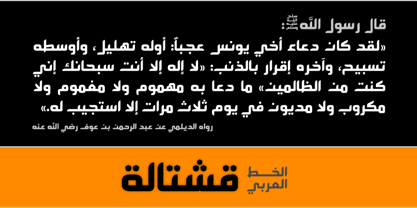
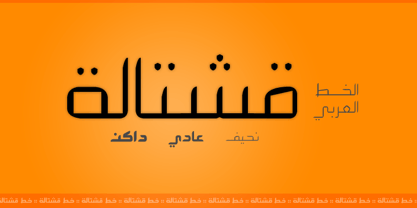
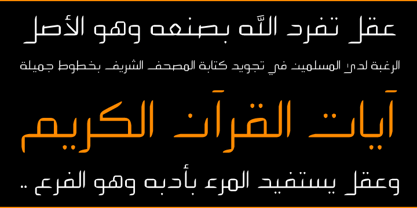
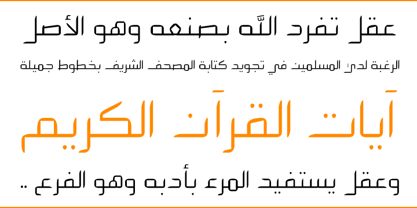
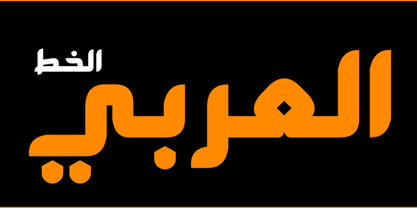
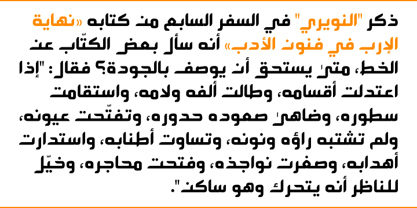
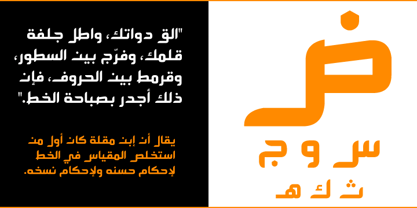
- Aa Glyphen
-
Bestes AngebotFamilienpakete
- Einzelschnitte
- Technische Daten
- Lizenzierung
Per Font:
$3.00
Paket mit 3 Fonts:
$9.00
Über die Schriftfamilie Castile
Kastilien ist eine zentrale Region Spaniens, die den Kern des Königreichs Kastilien bildete, unter dem Spanien im 15. und 16. "Castile" ist eine moderne arabische Kufisch-Schrift. Sie eignet sich für Buchumschläge, Werbetafeln und Titel in Zeitschriften und Zeitungen. Sie ist sehr markant, wenn sie in Schwarz-Weiß gedruckt wird. Sie schmückt farbige Seiten und macht Kunstwerke attraktiver. Diese Font gibt es in drei verschiedenen Strichstärken. Ich bewundere Spanien und die historischen Errungenschaften der islamischen Zivilisation, die dort in der Vergangenheit existierte. Mit dem Entwurf der Schrift "Castile" wollte ich auf die islamische Zivilisation hinweisen, die die Muslime in Spanien und insbesondere in Andalusien hatten. Heute lebt der Name Kastilien in zwei autonomen Regionen Spaniens weiter: Kastilien-La Mancha (Hauptstadt ist Toledo) und Kastilien-Leon (Hauptstadt ist Valladolid). Das Hauptmerkmal der "Castile"-Schrift ist ihr modernes offenes Ende Stil für einige ihrer arabischen Zeichen wie "Sad", "Dad", "Seen", "Sheen", "Qaf", "Faa", "Yaa" und andere. Die Form des "Punktes", der "Punkte" und der "Spitze" der Schriftzeichen ist innovativ: ein Dreieck mit einer Halbkreisform. Die Schrift "Castile" eignet sich für Buchumschläge, Werbetafeln und Titel in Zeitschriften und Zeitungen. Der moderne kufische Stil der Schriftzeichen verleiht der Schrift mehr Unterscheidungskraft, wenn sie auch auf Postern, Grußkarten, Umschlägen, Ausstellungsschildern und Außen- oder Innenwänden von Einkaufszentren oder Metroausgängen und -eingängen verwendet wird. Sie kann auch in Titeln für arabische Nachrichten und Werbung in verschiedenen arabischen und ausländischen Satellitenkanälen verwendet werden.
Designer: Eyad Al-Samman
Herausgeber: Eyad Al-Samman
Foundry: Eyad Al-Samman
Eigentümer des Designs: Eyad Al-Samman
MyFonts Debüt: Dezember 20, 2011
Über Eyad Al-Samman
Eyad Al-Samman ist ein jemenitischer Autor, Dozent, Typograf und freiberuflicher Grafikdesigner. Er wurde in Sana'a, der Hauptstadt des Jemen, geboren und lebt noch immer dort. Eyad hat einen Bachelor-Abschluss in Elektro- und Computertechnik und einen Master-Abschluss in Betriebswirtschaftslehre. Er arbeitet als Lehrbeauftragter an lokalen jemenitischen Universitäten und Volkshochschulen. Er unterrichtet dort betriebswirtschaftliche und andere Fächer in englischer Sprache. Eyad arbeitet seit 1999 als Grafikdesigner und entdeckte Mitte der 2000er Jahre die magische Welt der Typografie. Seine erste entworfene Schrift war Loyolliams, die er Ende 2005 entwarf. Seine Fonts wird hauptsächlich für den Satz und die Veröffentlichung verschiedener Texte verwendet, darunter Arabisch, Persisch, Urdu, Kurdisch, Latein, Kyrillisch und andere Texte. Eines seiner komponierten Pangramme ist (die wachsweichen Herren haben meinen fabelhaften Witz mit Kreide übermalt), das 34 Buchstaben enthält.
Mehr lesen
Weniger lesen